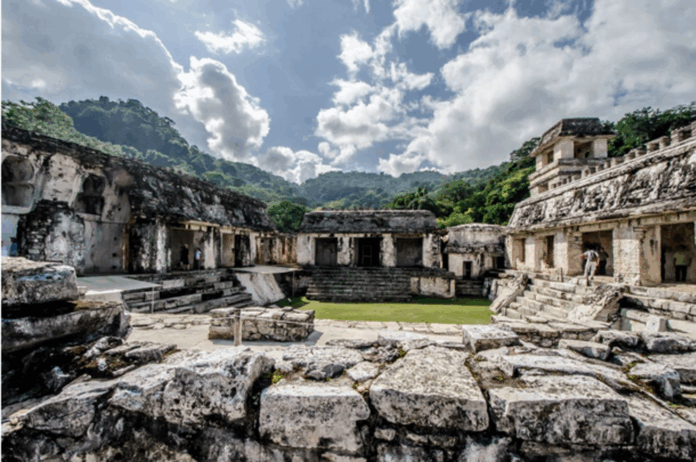Collapsed 1,200 years ago. But their genes never stopped spreading
Scientists studied the genetic makeup of seven Maya individuals—including one who was the victim of human sacrifice.
Here’s what you’ll learn when you read this story:
- A new study uses genome analysis to show the decline, not erasure, of the ancient Maya civilization.
- Researchers compared the genomes of seven skeletons to previously sequenced sets from across Siberia and the Americas, and showed strong genetic continuity from ancient to contemporary Maya people.
- Time-stamped genomes revealed a population increase peaking around 730 A.D. (likely thanks to the emergence of maize agriculture), and a subsequent decline in 750 A.D. (directly coinciding with the collapse of Maya civilization).
The ancient Maya were a group of Mesoamerican Indigenous people who developed one of the most advanced societies in history, which such achievements as a complex written language and amazingly accurate calendar systems. One of the thriving capitals of Maya civilization was Copán—a city in modern-day Honduras that acted as a travel hub between Central and South America. A new study analyzing skeletons buried near Copán reveals the collapse, but not total erasure, of the Maya civilization over 1,200 years ago.
“Our findings indicate a decline in population size,” Shigeki Nakagome, a co-author of the study, told Live Science, that “aligns with a scenario proposed by archaeologists in which the population decreased but did not become entirely extinct.”
Published on May 28 in the journal Current Biology, the study included analysis of the genomes of seven individuals from the Classic Maya period—or the period in which Maya civilization experienced destabilization and eventual collapse—to investigate the hypothesis that Copán was ruled by outsiders. Inscriptions previously found in Copán suggest the first ruler of the dynasty, K’inich Yax K’uk’ Mo’, was an outsider who assumed power in 426 B.C. The theory suggests that a network of Maya elites migrated to the region and married with the local, non-Maya population, creating immense social change. Previous studies analyzing tooth enamel support the migration hypothesis.
Researchers found that each of the seven individuals had different marriage lineages. Two of the people—one a possible member of the ruling dynasty, and the other a victim of human sacrifice—belonged to the same Y-chromosome haplogroup. A haplogroup is a population that has the same genetic markers passed down by a common ancestor. However (though this seems remarkable), it doesn’t mean that the two individuals were closely related.
“Even though the dynastic ruler and the sacrificed individual share the same Y-chromosome haplogroup,” Nakagome told Live Science, “we did not find any kinship.”
On top of comparing the individuals’ genomes to each other, researchers also compared the sets with previously sequenced genomes from across the Americas and Siberia. The scientists found strong evidence of genetic continuity between ancient and modern Maya people, suggesting “the enduring persistence of local ancestry in the Maya region,” according to the study. Researchers also found an influx of people with ancestry from highland Mexican populations extant during the early to mid-Classic period. These outsiders could have been part of the dynasty of Copán.
Finally, researchers used time-stamped genomes to estimate population sizes at different points in time. The study determined that Maya society saw a sharp increase in population that peaked around 730 A.D. at 19,000 people. According to researchers, the spike likely occurred thanks to the emergence of maize agriculture. Researchers saw a subsequent decline in population around 750 A.D., “coinciding with the onset of the collapse of Classic Maya civilization,” according to the paper.
The scientists on the study juggled many questions while conducting their research, which ultimately furthers our understanding of both the ancient and contemporary Maya people.
“[O]ur research offers a new perspective, suggesting the enduring persistence of local ancestry in the Maya region,” the researchers wrote, “while also highlighting the broader mobility beyond the conventional boundaries of the Maya territory.”

